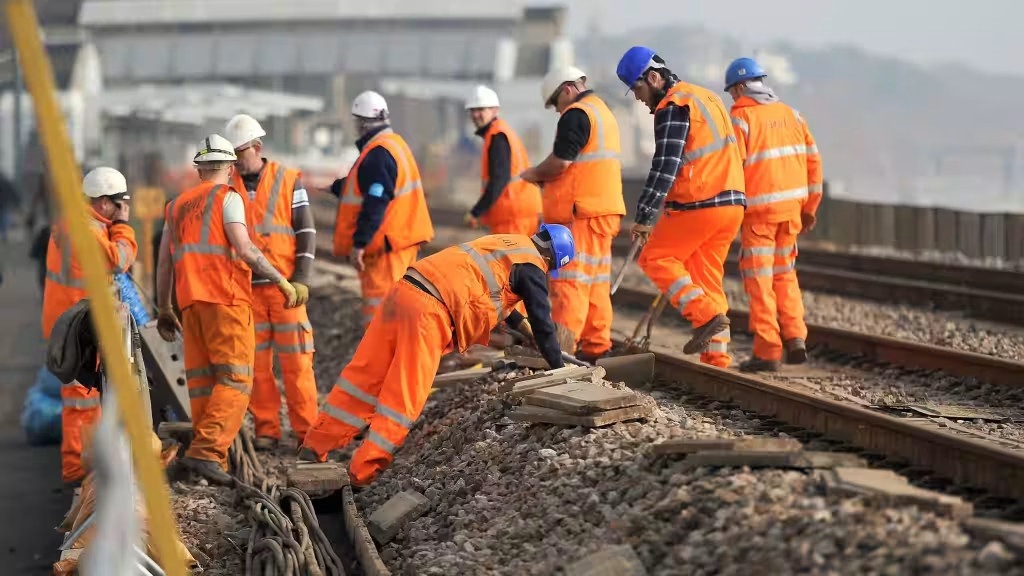Railroads are the backbone of many transportation networks, playing a critical role in moving goods and people across vast distances efficiently. Ensuring the safety and efficiency of these rail systems hinges on one crucial factor: Railroad Maintenance. At Tri Innovations, we understand the importance of reliable railroad maintenance to keep your tracks in optimal condition, preventing accidents, minimizing downtime, and extending the lifespan of your infrastructure.
In this article, we will explore the vital aspects of railroad maintenance, its benefits, the key techniques used, and how it contributes to safer and more efficient rail operations. Whether you are a railroad operator, maintenance manager, or stakeholder, this comprehensive guide will help you grasp why investing in professional railroad maintenance is a smart choice.
Understanding Railroad Maintenance
Railroad maintenance encompasses all activities involved in inspecting, repairing, and upgrading railroad tracks and associated infrastructure to ensure safe and smooth train operations. It involves regular checks and prompt interventions to address wear and tear caused by constant use and harsh environmental conditions.
The Importance of Railroad Maintenance
Proper railroad maintenance is fundamental for:
- Safety: Preventing derailments and accidents by addressing track defects.
- Efficiency: Ensuring trains can run smoothly at optimal speeds without delays.
- Longevity: Extending the lifespan of tracks and reducing replacement costs.
- Cost Savings: Avoiding costly emergency repairs and operational interruptions.
Without consistent railroad maintenance, tracks can deteriorate quickly, leading to hazardous situations and costly downtimes.
Types of Railroad Maintenance
Railroad maintenance can be broadly categorized into three main types:
- Preventive Maintenance: Routine inspections and minor repairs aimed at preventing problems before they occur.
- Corrective Maintenance: Repairs performed after detecting faults or damage during inspections.
- Predictive Maintenance: Using data and technology to predict failures and schedule maintenance proactively.
Tri Innovations emphasizes a balanced approach combining all three types to maximize track reliability.
Key Components of Railroad Maintenance
Railroad maintenance involves a variety of tasks focused on different parts of the rail infrastructure.
Track Inspection
Regular inspection is the cornerstone of effective railroad maintenance. It involves:
- Visual checks for cracks, wear, and alignment issues.
- Ultrasonic testing to detect internal rail flaws.
- Track geometry measurements to ensure proper gauge and alignment.
Early detection of faults through thorough inspections allows for timely repairs that prevent accidents.
Rail Grinding
Rail grinding smooths the surface of rails to remove irregularities and restore the rail profile. This process:
- Reduces rail wear and tear.
- Minimizes noise caused by train operations.
- Improves wheel-rail contact, enhancing safety and efficiency.
Rail grinding is a proactive maintenance step that prolongs the life of the tracks and enhances ride quality.
Tie and Fastener Maintenance
Railroad ties support rails and maintain track gauge, while fasteners secure rails to ties. Maintenance includes:
- Replacing deteriorated or damaged ties.
- Tightening or replacing loose fasteners.
- Ensuring proper ballast support under ties.
Maintaining ties and fasteners ensures track stability and prevents track shifts that could cause derailments.
Ballast Cleaning and Renewal
Ballast—the crushed stone beneath ties—provides drainage and support. Over time, ballast can become fouled with dirt or broken down. Maintenance includes:
- Cleaning fouled ballast to restore drainage.
- Adding fresh ballast to maintain proper track geometry.
- Repacking ballast to stabilize the track.
Well-maintained ballast prevents water accumulation and maintains track integrity.
Switch and Crossing Maintenance
Switches and crossings are critical points where tracks diverge or intersect, requiring precise maintenance:
- Lubrication to reduce wear on moving parts.
- Adjustment and alignment to ensure smooth train transitions.
- Replacement of worn components to prevent malfunctions.
Proper maintenance of switches and crossings is vital for operational safety.
Benefits of Investing in Reliable Railroad Maintenance
Choosing a professional railroad maintenance provider like Tri Innovations brings multiple advantages:
Enhanced Safety
Regular maintenance reduces the risk of derailments, accidents, and equipment failure by addressing faults early. This protects both personnel and cargo.
Increased Operational Efficiency
Well-maintained tracks allow trains to operate at optimal speeds with fewer disruptions. This leads to timely deliveries and satisfied customers.
Lower Long-Term Costs
Preventive and predictive maintenance reduce the need for expensive emergency repairs and costly infrastructure replacements.
Environmental Impact
Efficient railroad maintenance minimizes fuel consumption by reducing train resistance on tracks, thus lowering carbon emissions.
Modern Technologies in Railroad Maintenance
The railroad industry is rapidly adopting new technologies to improve maintenance practices.
Automated Track Inspection Systems
Drones, track inspection cars, and sensors now provide real-time data on track conditions, enabling faster and more accurate maintenance decisions.
Predictive Analytics
Big data and machine learning help forecast failures and optimize maintenance schedules, improving reliability and resource allocation.
Robotics and Automated Repair
Robots assist in performing repetitive or hazardous maintenance tasks, increasing safety and efficiency.
Tri Innovations stays at the forefront of these innovations to offer the best solutions.
Best Practices for Effective Railroad Maintenance
To maximize the benefits of railroad maintenance, follow these best practices:
- Schedule regular inspections and maintenance checks.
- Use data-driven predictive maintenance tools.
- Train staff thoroughly in maintenance procedures.
- Maintain detailed maintenance records for tracking and planning.
- Partner with experienced maintenance providers.
Conclusion
Reliable railroad maintenance is essential to keep your tracks safe and efficient. It ensures smooth train operations, enhances safety, extends infrastructure lifespan, and reduces overall costs. By investing in comprehensive railroad maintenance services, such as those offered by Tri Innovations, railroad operators can safeguard their assets and improve operational performance.
